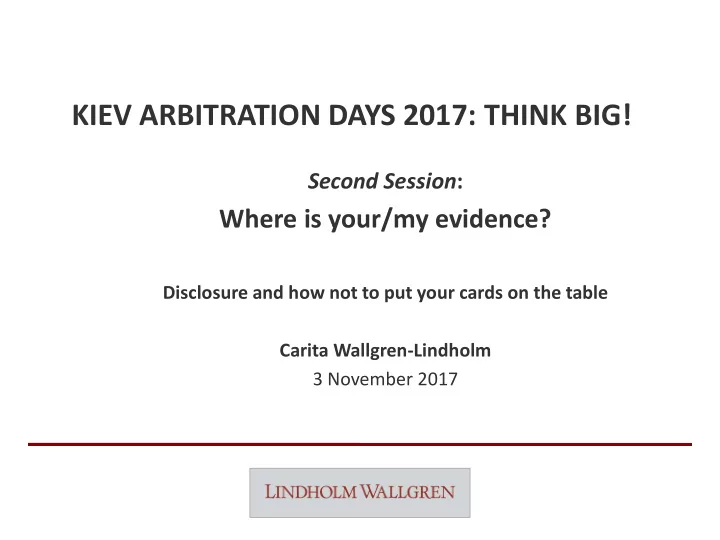

KIЕV ARBITRATION DAYS 2017: THINK BIG! Second Session : Where is your/my evidence? Disclosure and how not to put your cards on the table Carita Wallgren - Lindholm 3 November 2017
Disclosure and how not to put your cards on the table 1. Topic and its analysis; 2. Relevant players and their perspective: Claimant, Respondent, Arbitrators; 3. Legal cultures and techniques for the presentation of written evidence (all related docs vs. matters in dispute); 4. Background docs for context/atmospheric docs/evidencing matters in dispute/admissibility;
Disclosure and how not to put your cards on the table 5. Timeline (for both sides); 6. Voluntary/semi-voluntary/involuntary disclosure (incl. access to national courts); 7. Relevance of seat, lex arbitri (e.g. Sweden); 8. Burden of proof; 3
Disclosure and how not to put your cards on the table 9. Relevance of arbitrator identity; 10. Your “litigant’s profile”: strategy/maintaining focus/credibility (up-front vs. piecemeal and extent of disclosure)/ user friendliness; 11. Many acts by Counsel will be evaluated against this backdrop (e.g. credibility of refusals); 4
Disclosure and how not to put your cards on the table 12. Soft law: IBA Rules on the Taking of Evidence in International • Arbitration (2010) IBA Guidelines on Party Representation in International • Arbitration (Section 12: Information Exchange and Disclosure) (2013) 13. Deontological rules applicable to Counsel and asymmetry; 5
Disclosure and how not to put your cards on the table 14. Briefly on confidentiality, legal privilege and business secrets (and relevant enactments); 15. Solving the dispute put before the arbitrators or finding the truth (degrees of necessary inquisition/intellectual curiosity/justice being served). 6
Recommend
More recommend